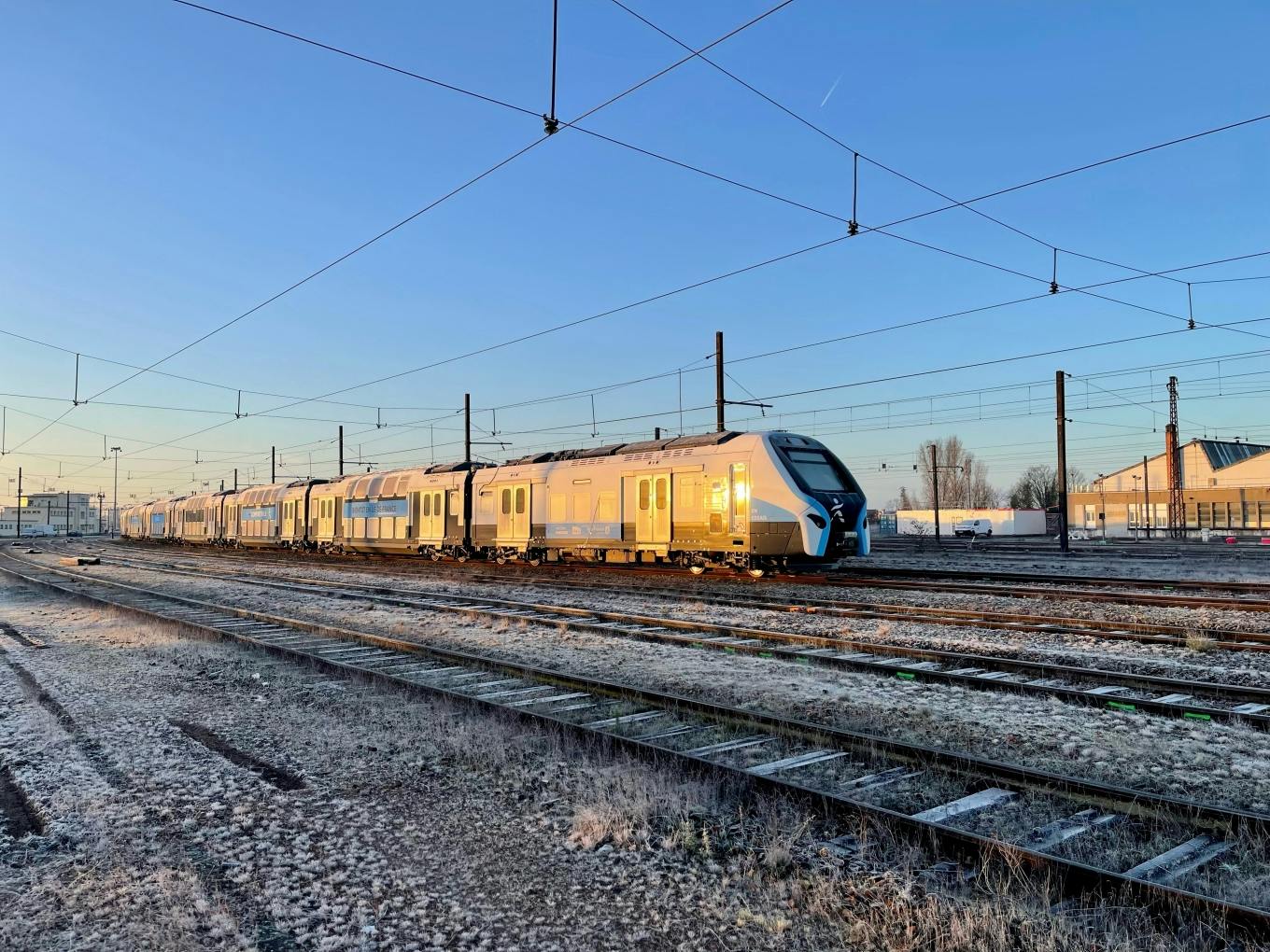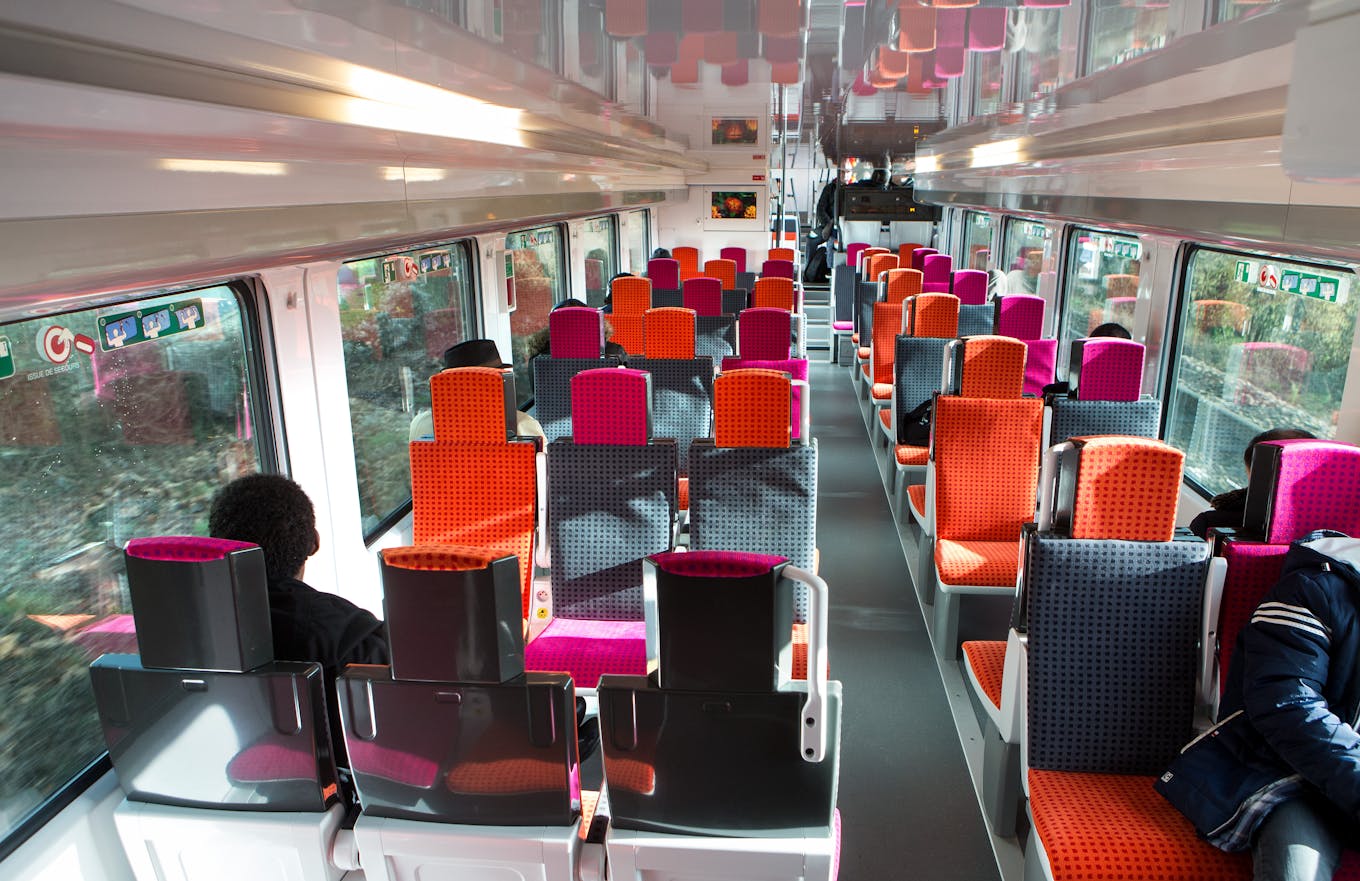The 8 (essential) steps before a train or RER is put into service
Published on
Before opening its doors to the very first passengers, a train must pass a series of tests. What are they used for? How long do they take? Let us explain.

An RER NG train at Gare de Lyon for integration tests, in June 2023
Twenty-four months on average is the time it will take for a train to be tested from every angle, before welcoming the first passengers.
Two essential years because a train is:
- Several thousand passengers per day, for several decades
- This equipment must be compatible with the infrastructure, signalling, power supply of the Ile-de-France rail network, passenger information systems and adapted to the platforms of the various stations
- But also regulations and multiple authorizations to be obtained for the safety and comfort of all
These special conditions require a series of comprehensive tests and trials, in eight stages, to ensure a functional, comfortable and accessible service for all passengers.
Discover them, one by one!
How long does each step take?
It is difficult to talk about the average time spent for each stage, because they can overlap and depend on many external factors... But the average duration for all the stages is 24 months in total.
Step 1: Static tests, a general review of train operation
It all starts with the construction of prototypes of the future train (five in the case of the RER NG, for example).
These prototypes will serve as a basis for the organisation of a first series of static tests carried outin France or abroad. These tests make it possible to check the general operation of the train (including its comfort instruments such as air conditioning and lighting, for example) and to carry out all the necessary adjustments before moving on to the checks with the train moving (also called "dynamic tests").
Step 2: Dynamic testing, a prime time to test safety, performance and comfort

With the static tests completed, the manufacturer can now start dynamic testing on a closed-loop circuit, also known as the "test ring".
This involves testing the performance (such as braking and acceleration) and the behaviour of the train in motion, in terms of safety and comfort.
In France, for trains, metros and trams built by Alstom, the tests are carried out at the Petite-Forêt Railway Test Centre near Valenciennes, close to the main production plants.
Then, to carry out tests with higher speeds (up to 140 km/h!), the trains can be sent abroad, such as to the Velim ring in the Czech Republic (this is the case of the RER NG for example).
Step 3: Climate controls, for an efficient train in all seasons
The components and functionalities of the train are tested under extreme temperatures (from -20° to +45°) for a train that works under all skies.
In the case of the RER NG, the prototypes left for Vienna, under the Austrian snow, to carry out climatic tests in gigantic halls.
Step 4: "Shunting", safety above all
The somewhat barbaric term "shuntage" means the detection of the electrical contact of the train on the tracks. This is a very important aspect for safety that makes it possible to detect the presence of the vehicle on a portion of the track and therefore to locate it, with the specific objective of ensuring the correct spacing between two trains.
Shunting is a crucial step to ensure the safety of passengers, it is essential for obtaining authorizations to continue the tests, this time, on the national rail network.
Step 5: a new train is also approved to run
That's it! The prototypes are now suitable for use on the national rail network. A series of year-long inspections has now begun in which each requirement of the specifications will be put to the test in normal traffic conditions, as well as in extreme and degraded conditions.
These tests, like those carried out on rings, are said to be certifying (according to European standards) and qualifying (according to the standards of the specifications).
In concrete terms, this means that once these controls have been passed, the train obtains authorisation from the French authority (the EPSF for Public Railway Safety Establishment) to run in pre-operation.
Step 6: Marketing authorisation and arrival of the first trains
The trains, the real ones, are delivered to the operator (the company that takes care of the operation of the trains on the lines). A registration and a marketing authorisation are issued to confirm that the train is compliant. It's like getting a registration document for a new car!
A fleet of trains is set up, available to the operator, so that it can appropriate it and train the drivers and agents.
Step 7: integration tests, the train arrives on its future lines
The train is now being tested by the operator in real operating conditions,first on the platform, then directly on its future Ile-de-France lines.
Filling gaps*, station stops, proper functioning of security cameras, more than 40 parameters are studied with a fine-tooth comb to ensure the compatibility of the train with the infrastructure. The objective? Obtain the last sesame, the certificate of compatibility**.
The integration tests are taking place in parallel with the training of drivers for the new trains. It's a bit like a dress rehearsal before launching the commercial service, i.e. the authorization to receive passengers on board.
Step 8: The first-ever commercial traffic

A Regio 2N train and its passengers between Melun and Montereau © Christophe RECOURA - Île-de-France Mobilités
That's it! After two years of testing, the train is ready to welcome its very first passengers in comfort and safety!
*Installation that fills the space between the train and the platform to facilitate boarding for passengers, especially wheelchair users
**This certificate is granted by the infrastructure manager SNCF Réseau.